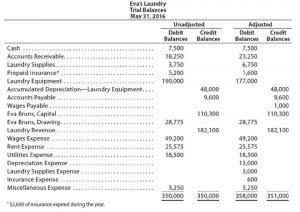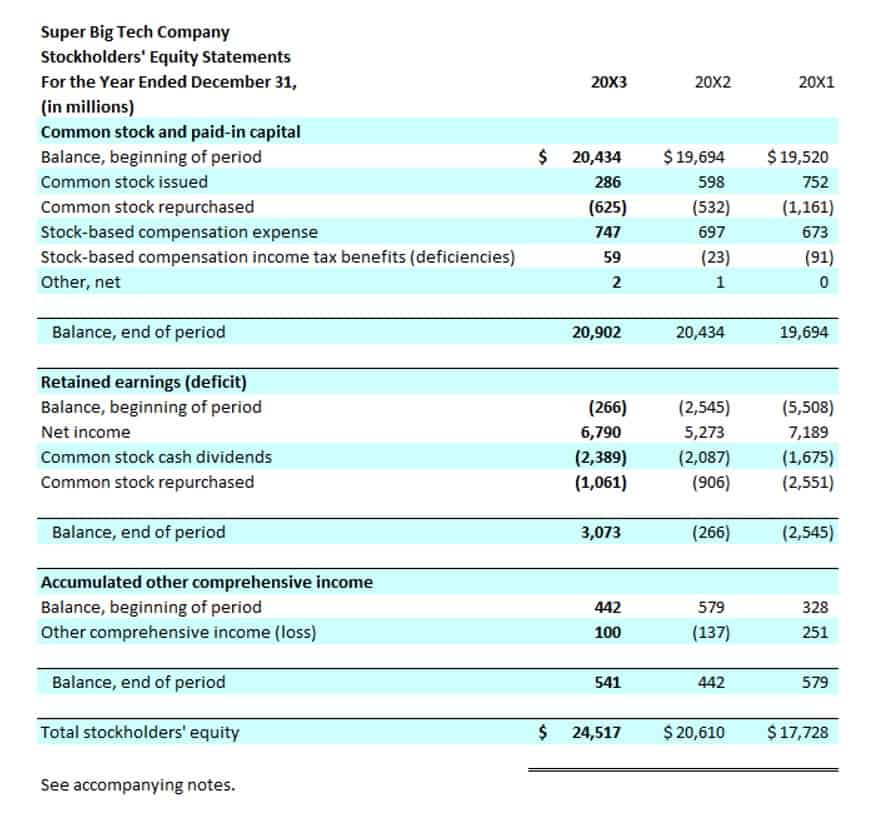Understanding the Going-Concern Concept in Business
04 Th4, 2022 admin

An auditor can give a going concern opinion if they have doubts about a company’s ability to continue its operations for the foreseeable future. They may also look at indicators such as liquidity ratios, employee turnover rates, and market share to assess the likelihood of a company being a going concern. Determining a company’s status as a going concern influences how certain expenses and assets are reported in financial statements. A going concern may defer reporting long-term assets at current value while a company not considered a going concern may be required to report these assets at liquidating value.
- These indicators suggest that the bakery is expected to continue its operations and there are no threats to its status as a going concern in the near future.
- Red Flags of Going ConcernFinancial statements can reveal several indicators that a company may no longer be considered a going concern.
- If management concludes that its plans do alleviate the substantial doubt, a disclosure is still required.
- If the accountant believes that an entity may no longer be a going concern, then this brings up the issue of whether its assets are impaired, which may call for the write-down of their carrying amount to their liquidation value.
- The disclosure must also detail management’s plans intended to mitigate these conditions.
Instructions for an Auditor
The product should be reasonably priced and innovative to beat its peers and retain value for the customers. Although the going concern assumption holds no place in the Generally Accepted Accounting Principles (GAAP), it is recognized by Generally Accepted Accounting Standards (GAAS). GAAS considers this principle a crucial parameter for determining the longevity of a business. The valuation of an entity, assuming it’s on a going concern basis, will be higher, as it offers the potential to earn higher profits in the future than its liquidation value. Without any significant information to the contrary, it is always assumed that the entity will be able to meet all its obligation without significant debt restructuring and continue to be a going concern entity.
Key Significance of the Going Concern Concept
Should such circumstances arise, auditors and management of the company have to determine if the going concern assumption still holds true. If a company is a going concern, it has no intention to liquidate, so why should it report the current value of its long term assets? Yet, if the value of an asset has been damaged or weakened, then the carrying amount of the asset could be reduced to an amount lower than its carrying value. The disclosure must also detail management’s plans intended to mitigate these conditions.
Restructuring a Company Not Considered a Going Concern

However, the company’s ability to continue as a going concern is dependent on its ability to generate sufficient revenue and secure additional financing as needed. The Importance of Going Concern AssumptionFinancial reporting is significantly influenced by the going concern assumption. When a business is assumed to be a going concern, expenses and assets can be reported at their historical cost instead of being adjusted for current value. This approach results in more conservative financial statements that reflect the reality of the business’s operations during the reporting period, providing useful information for investors and stakeholders. In the same way, the going concern concept may hinder the accurate assessment of real financial health, particularly during times when the company is under serious challenges. If the company is not doing well on a business basis but is able to sustain its operations, its financial statements may portray a sense of balanced stability while it is actually suffering.


By contrast, the going concern assumption is the opposite of assuming liquidation, which is defined as the process when a company’s operations are forced to a halt and its assets are sold to willing buyers for cash. More specifically, companies are obligated to disclose the risks and potential events that could impede their ability to operate and cause them to undergo liquidation (i.e. be forced out of business). Liquidation value, on the other hand, is relevant to a situation where the company becomes insolvent and is unable to pay its bills. An insolvent company may choose to sell its assets one by one or all of its assets together. The value received from the sale is usually retained earnings the asset’s market value, less sale expenses. Liquidation value is very important for creditors and stakeholders, who would be paid out of this money.

Adhering to standards like ISA 570 (Revised), auditors uphold the integrity of financial reporting. Beyond compliance, Financial Forecasting For Startups the principle fosters transparency and trust among stakeholders, including investors, creditors, and regulators. By adhering to the going concern assumption, businesses provide a consistent basis for evaluating financial performance, which is especially relevant in industries exposed to rapid change or economic volatility. Accounting standards determine what a company must disclose on its financial statements if there are doubts about its ability to continue as a going concern. The going concern principle is the assumption that an entity will remain in business for the foreseeable future.
- A company may also face a denial of trade credit from its suppliers or need to seek debt restructuring to avoid default.
- ✅ Indicators of financial distress and factors that may challenge the going concern assumption.✅ Types of events after the reporting period (adjusting vs. non-adjusting events).
- When management faces such adversity, there may be a denial of how critical the situation is, but they must create rolling cash flow projections to demonstrate their plans for maintaining solvency.
- In addition, management must include commentary regarding its plans on how to alleviate the risks, which are attached in the footnotes section of a company’s 10-Q or 10-K.
- Environmental risks, like natural disasters, further compound challenges for businesses without robust contingency plans.
- When an auditor concludes that substantial doubt remains, the audit report is modified.
Because of the Going Concern Concept, the company doesn’t report the full ₹10,00,000 as an expense in the first year. Instead, it spreads the cost over the 10-year period (e.g., ₹1,00,000 per year), matching the expense with the revenue the asset helps generate over its life. In this guide, we will explore the going concern concept, its significance, examples, and how management evaluates the company’s ability to operate as a going concern. When an auditor issues a going concern qualification, the way their opinion is disclosed depends on the structure of the business. A financial auditor is hired by a business to evaluate whether its assessment of going concern is accurate.
An investor would want to know that the business he is venturing into would still be operational and would provide him a return for his investment. He would want to be assured before extending any loans that a company would repay him, or his loan would not be a write-off. If the business is not a going concern, it may cause considerable financial uncertainty and, in turn, may complicate attracting an investor or securing loans. The presence of a going concern disclosure in a company’s financial statements has a direct effect on the independent auditor’s report. The auditor has a going concern separate responsibility to highlight this issue for users of the report. The assumption that a business is expected to continue in future affects the timing, nature and amount on which accounting transactions are recorded.
Impact on Financial Statements
Creditors are a significant stakeholder group concerned with the long-term viability of a debtor in bankruptcy proceedings. When faced with uncertainty about a company’s future as a going concern, they might prefer liquidation to recover their debts rather than waiting for an uncertain outcome from reorganization efforts. In contrast, equity holders, such as shareholders and bondholders, may prefer the business to continue operating under a new plan to preserve their investment’s value. When faced with mounting debts or negative operating trends, management must take decisive actions to stabilize the organization and restore its financial health. Restructuring measures could include selling off underperforming assets, reducing workforce, streamlining operations, or even renegotiating loan covenants. This information is critical for investors and other stakeholders who need to evaluate the potential risks of holding or investing in the stock of such a company.

